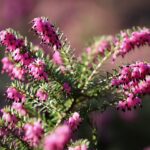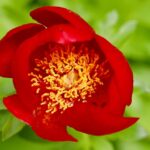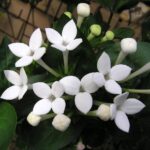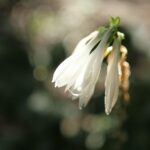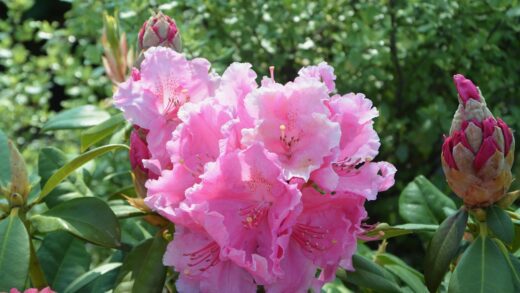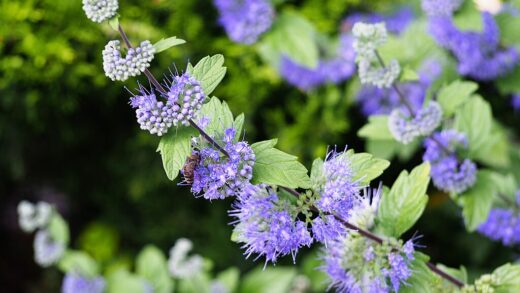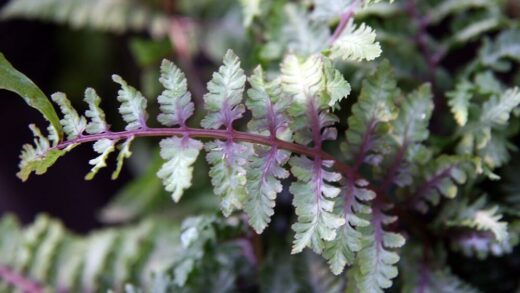As a tender annual native to warm, tropical climates, basil cannot survive frost and is typically grown for a single season in temperate regions. However, for the dedicated herb enthusiast, the end of the summer does not have to mean the end of fresh basil. With the right approach, it is entirely possible to overwinter basil, preserving a favorite plant through the cold months to enjoy a continued harvest and get a significant head start on the following spring. This process primarily involves bringing the plant indoors and creating an environment that provides the warmth, light, and care it needs to thrive in a much different setting than the summer garden.
The success of overwintering basil begins with selecting the right plant. It is best to choose a healthy, vigorous, and compact plant that is free from any signs of disease or pest infestation. Attempting to save a plant that is already struggling is unlikely to be successful. Ideally, you should plan ahead and pot up a plant from your garden in late summer, well before the first frost is expected. This gives the plant time to acclimate to living in a container before it also has to deal with the stress of moving indoors. Alternatively, taking cuttings from a healthy garden plant and rooting them indoors is another excellent method for preserving its genetics.
The transition from outdoors to indoors must be handled carefully to avoid shocking the plant. Do not wait until the night of the first frost to bring your basil inside. Instead, begin the process a week or two beforehand. Start by bringing the plant indoors for just a few hours each day, gradually increasing the amount of time it spends inside. This gradual acclimatization helps the plant adjust to the significant changes in light intensity, temperature, and humidity between the two environments. Before the final move indoors, be sure to thoroughly inspect the plant for any pests, such as aphids or spider mites, and treat them accordingly to prevent bringing an infestation into your home.
Once inside, the primary challenge is to provide the basil with one of its most critical needs: light. A typical indoor windowsill, even a south-facing one, often does not provide enough hours of direct, intense sunlight during the winter months to keep a sun-loving herb like basil truly happy. Insufficient light will lead to weak, leggy growth and a loss of flavor. To combat this, you will almost certainly need to supplement the available natural light with a grow light. Placing the plant under a fluorescent or full-spectrum LED grow light for 10-12 hours per day will make a dramatic difference in its health and productivity.
Preparing plants for the move
The preparation for overwintering basil should begin in late summer, while the plant is still actively growing in the garden. Select your healthiest and most robust specimen for the task. Before digging it up, it’s a good practice to prune the plant back by about one-third. This pruning reduces the amount of foliage that the root system has to support, which helps to lessen the stress of being transplanted. It also encourages a new flush of compact growth that will be better suited to indoor conditions. Make your pruning cuts just above a set of leaves to stimulate bushier growth.
When you are ready to move the plant, carefully dig around the entire root ball, getting as much of the root system as possible. Gently lift the plant from the ground and transplant it into a suitably sized pot with fresh, high-quality potting mix. The pot must have adequate drainage holes to prevent waterlogging, which is a common problem for indoor plants. Water the plant thoroughly after potting to help settle the soil and reduce transplant shock. It’s best to perform this task at least two weeks before you plan to bring the plant indoors for good.
This transitional period, when the plant is potted but still living outdoors, is a critical time for pest inspection and management. Carefully examine the leaves, stems, and the surrounding soil for any signs of insects. Check for aphids on new growth, look for the fine webbing of spider mites, and inspect the soil for fungus gnats. It is far easier to treat a pest problem outdoors than it is once the plant is inside your home. A gentle spray with insecticidal soap is a good preventative measure to take before bringing the plant indoors, even if you don’t see any visible pests.
During this acclimatization phase, as you begin bringing the plant inside for short periods, also pay attention to its watering needs. The plant’s water consumption may change once it’s in a pot. The goal is to keep the soil consistently moist but not saturated. Allow the top inch of soil to dry out before watering again. This preparation period is all about minimizing the series of shocks the plant will experience—transplanting, moving indoors, and adjusting to a new environment—by spreading them out over time and giving the plant a chance to adapt to each change.
Creating the right indoor environment
Light is the single most important factor for successfully overwintering basil indoors. Basil requires a high intensity of light for many hours a day to photosynthesize effectively and produce flavorful leaves. A standard windowsill, even one facing south, will likely not be sufficient during the short, often overcast days of winter. To ensure your plant thrives rather than just survives, supplementing with artificial light is almost essential. A simple fluorescent shop light or a dedicated LED grow light placed just a few inches above the plant for 10-12 hours daily will provide the light energy it needs to maintain healthy, active growth.
Temperature and humidity are also key components of the indoor environment. Basil prefers the same warm temperatures that most people find comfortable in their homes, ideally between 65°F and 75°F (18°C to 24°C). However, you should try to position the plant away from sources of drafts, such as leaky windows or heating vents, as sudden temperature fluctuations can cause stress. Indoor air, especially in homes with central heating, can become very dry during the winter. Basil appreciates a more humid environment, so it can be beneficial to place the pot on a tray filled with pebbles and water (ensuring the bottom of the pot is not sitting directly in the water) or to use a small room humidifier nearby.
Proper watering is crucial and requires a different approach indoors than it does in the summer garden. The lower light levels and reduced growth rate of a wintering basil plant mean it will use significantly less water. Overwatering is a very common mistake that quickly leads to root rot. Before watering, always check the soil by inserting your finger about an inch deep. If the soil feels dry, it’s time to water. If it still feels moist, wait another day or two and check again. When you do water, do so thoroughly until water runs out the drainage holes, and then empty any excess water from the saucer.
Good air circulation is another often-overlooked aspect of indoor plant care. Stagnant air can create a humid microclimate around the plant’s leaves, which encourages fungal diseases like powdery mildew. Ensuring there is some gentle air movement in the room can help to prevent these issues. This can be as simple as opening a door to the room periodically or using a small, oscillating fan set on its lowest speed for a few hours a day. Good air circulation mimics the natural outdoor environment and contributes to a healthier overall plant.
Care and maintenance through winter
Once your basil is settled into its winter home, your care routine will need to adapt to its semi-dormant state. The plant’s growth will naturally slow down due to the reduced light and shorter days, even with supplemental lighting. Because of this reduced growth, the plant will require far less fertilizer than it did during the summer. You should suspend any regular fertilization schedule. If the plant still looks healthy and is producing some new leaves, you might provide a very dilute, half-strength liquid fertilizer once every six to eight weeks, but for the most part, it will not need supplemental feeding until growth picks up again in the spring.
Pruning and harvesting should also be done more sparingly throughout the winter. While you can certainly continue to snip leaves for your cooking, avoid any heavy harvesting. A good rule of thumb is to never remove more than a quarter of the plant’s foliage at one time. Continue to practice strategic pruning by pinching off the tips of the stems just above a pair of leaves. This will encourage the plant to remain compact and bushy rather than becoming tall and leggy. It is also very important to continue to remove any flower buds that may appear, as this will keep the plant’s energy focused on leaf production.
Regularly inspect your overwintered basil for any signs of pests that may have come in on the plant or that are common to houseplants. Spider mites, in particular, thrive in the warm, dry conditions found in many homes during the winter. Look for fine webbing between the leaves and stems and a stippled appearance on the leaves. Aphids and whiteflies can also be a problem. If you spot any pests, act quickly to control them. Wiping the leaves with a damp cloth or using a gentle insecticidal soap spray are effective and safe methods for indoor use.
As late winter transitions into early spring, you will notice a change in your basil plant. As the days grow longer and the natural light becomes more intense, the plant’s growth will begin to accelerate. This is the time to gradually increase your watering and resume a regular, albeit still dilute, fertilization schedule. You can also begin to prune it a bit more heavily to shape it and encourage vigorous new growth in preparation for its eventual move back outdoors. This resurgence of growth is a rewarding sign that your efforts to overwinter the plant have been successful.
Transitioning back outdoors
Just as the move indoors required a gradual transition, the process of moving your overwintered basil back outside in the spring must also be done carefully to avoid shock. The plant has spent several months in a protected indoor environment and is not accustomed to the intense direct sunlight, wind, and temperature fluctuations of the outdoors. You must wait until all danger of frost has passed and nighttime temperatures are reliably staying above 50°F (10°C) before you even begin this process. Rushing this step can easily kill the plant you worked so hard to preserve.
The process of re-acclimatizing the plant to outdoor conditions is essentially the hardening-off process in reverse. Start by placing the plant in a shady, sheltered location outdoors for just one or two hours on the first day. A spot on a covered porch or under a large tree is ideal. Over the course of the next one to two weeks, gradually increase the amount of time the plant spends outside each day. Also, slowly begin to introduce it to short periods of direct morning sunlight, which is less intense than the afternoon sun.
During this hardening-off period, you will need to pay close attention to the plant’s water needs, which will increase significantly as it is exposed to more sun and wind. The soil in the pot will dry out much faster outdoors than it did inside, so you will need to check it daily and water thoroughly whenever the top inch of soil becomes dry. This is also a good time to give the plant a dose of all-purpose fertilizer to support the new, vigorous growth that the stronger outdoor light will stimulate.
Once the plant has been fully hardened off and can tolerate being outside for 24 hours a day, you have a decision to make. You can either keep it in its container as a patio plant for the summer, or you can transplant it back into one of your garden beds. If you choose to plant it in the garden, do so on a calm, overcast day if possible to minimize transplant stress. Your overwintered plant will now have a huge head start on any new seedlings, providing you with a much earlier and more robust harvest, a fitting reward for your winter-long care.


